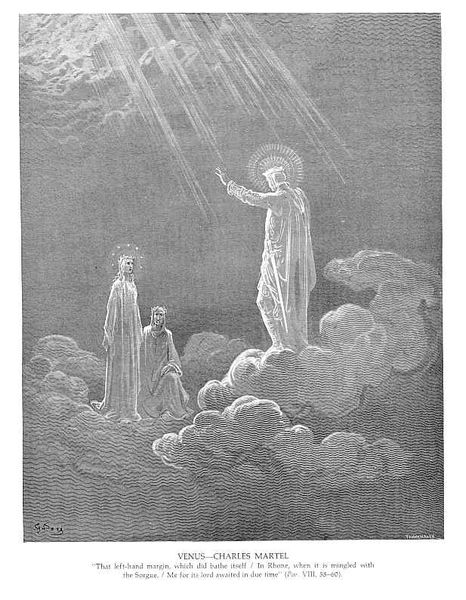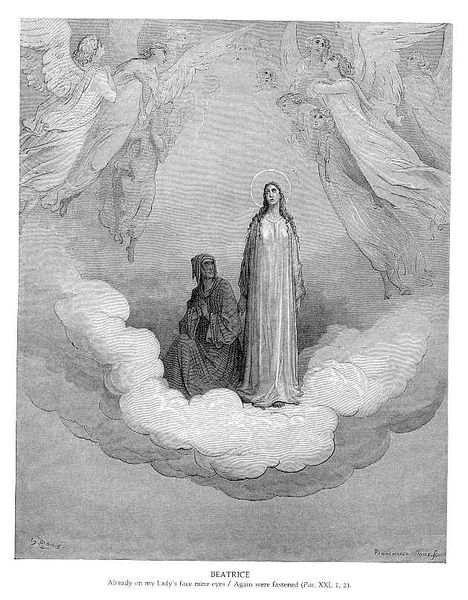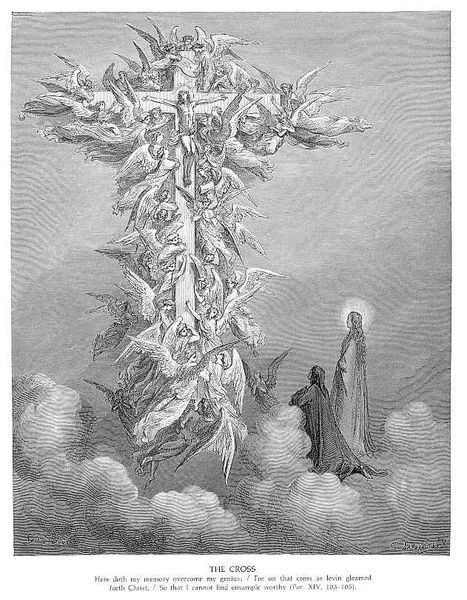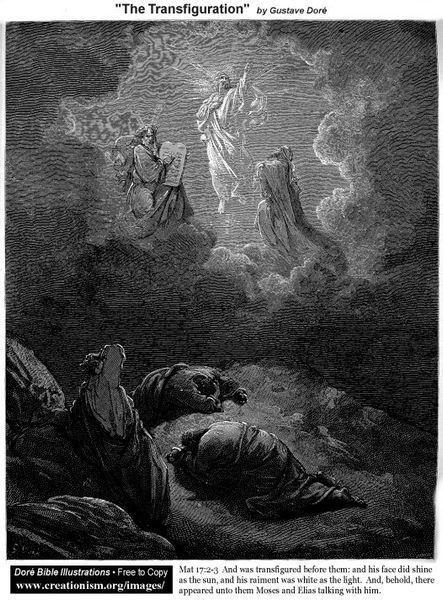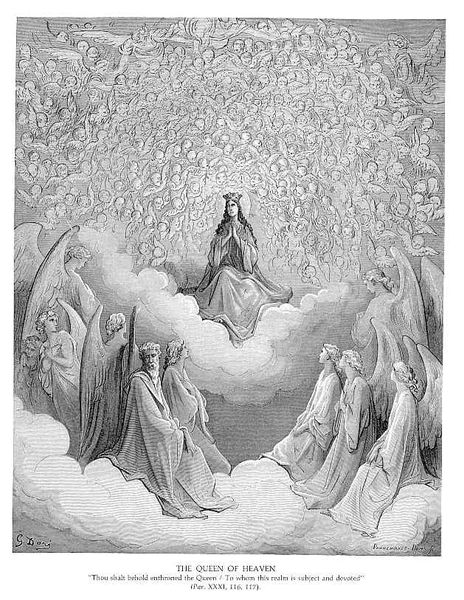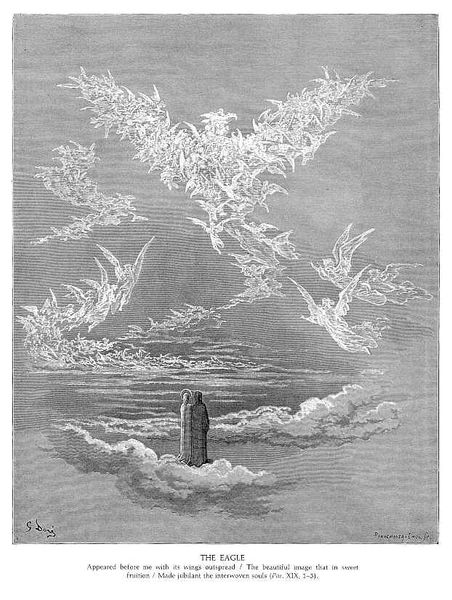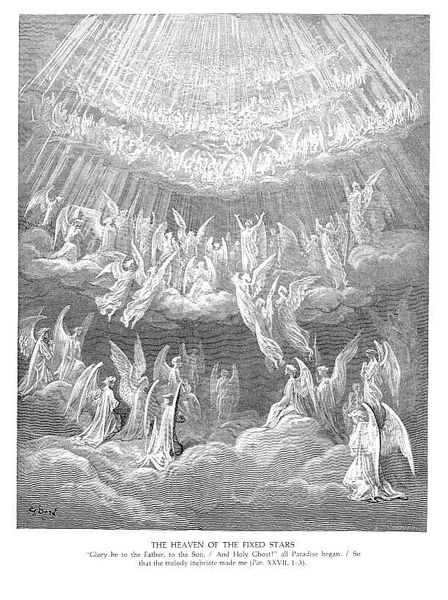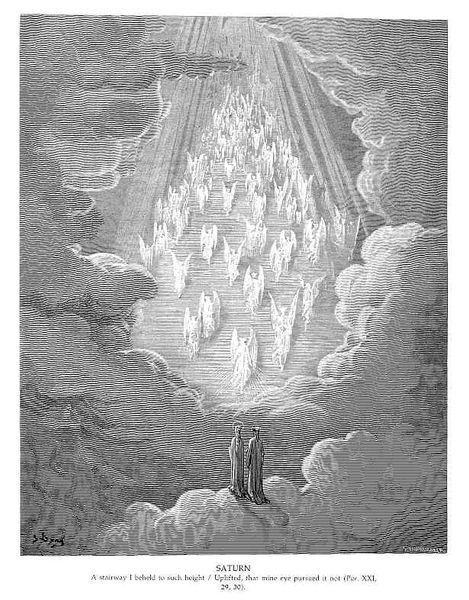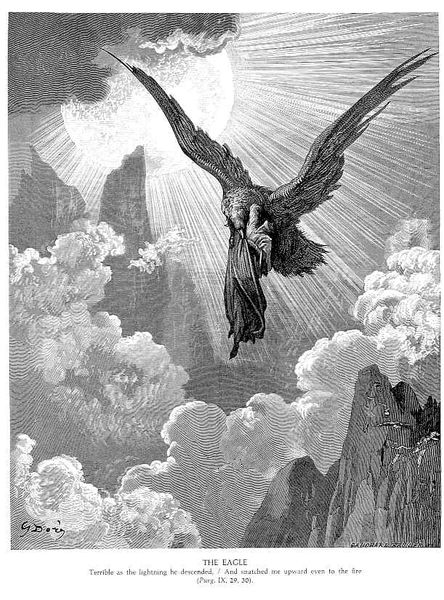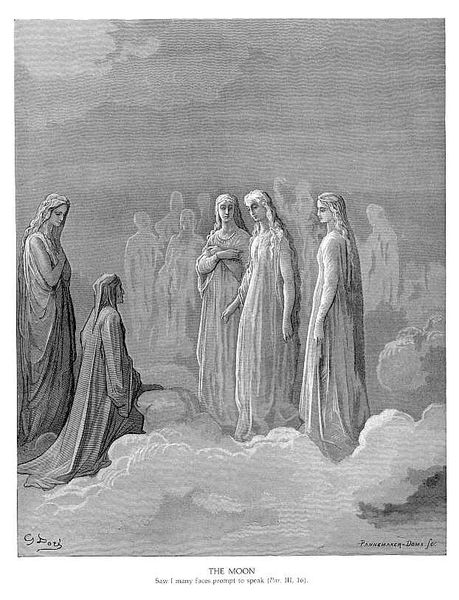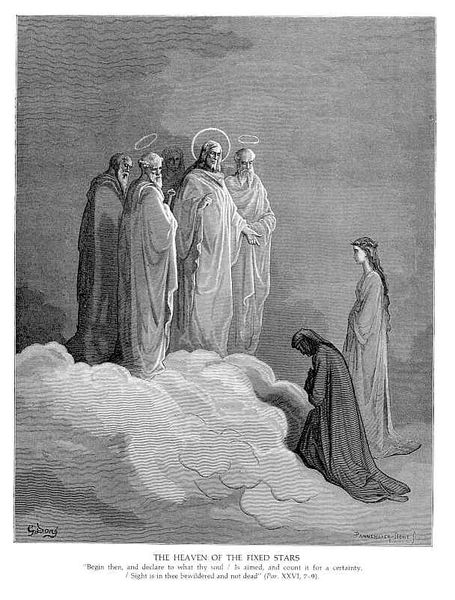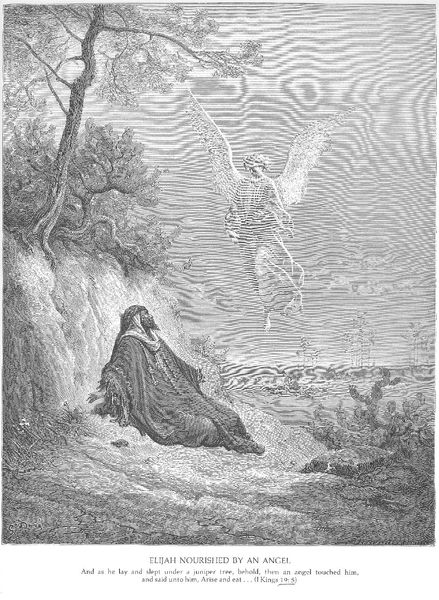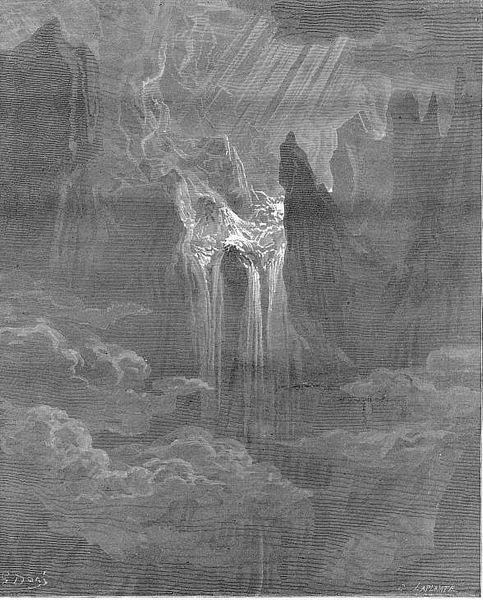
print, photography, engraving
# print
#
landscape
#
figuration
#
photography
#
romanticism
#
line
#
history-painting
#
engraving
Copyright: Public domain
Curator: This print is titled “Cacciaguida,” after one of Dante’s ancestors in the Divine Comedy, though it’s difficult to pin down an exact date of creation. Editor: It certainly feels… otherworldly. All that detail in the cloudscapes and the ethereal figures—it's masterfully crafted, yet mournful. You feel the weight of history just looking at the thing. Curator: That sense of history is key. Gustave Doré, the artist, was working within a Romantic tradition deeply invested in national narratives and epic storytelling. Here, he visualizes a key encounter from Dante’s *Paradiso*, but through the lens of 19th-century historical painting and religious art. He used engravings to achieve it, which in a way democratized access to grand, historically resonant imagery, much like photography would later on. Editor: Democratized is an interesting term, considering the labor involved in engraving. Imagine the hours upon hours to carve those minute lines to achieve such detail. You have figures constructed with simple but meticulous materials: metal plate, burin, ink, and paper. There’s an interesting contrast with the depiction of a heavenly realm. This divine ascent becomes something tangible and grounded. It's made material. Curator: Precisely, and Doré wasn't just illustrating the text; he was also interpreting its political and social dimensions. Cacciaguida appears as this idealized, almost mythical figure, representative of a lineage and a past sense of moral order in Florence. Remember that Doré created these images amidst a period of intense national self-reflection in Italy and France. Editor: You also get this implied connection between the manual process of the engraving, and Dante himself laboring to define something transcendent. It makes the idea of enlightenment appear… human. I wonder how his work resonated for printers at the time? How did their lives impact the decisions made when reprinting Doré? Curator: Absolutely. Considering the context of Romanticism alongside growing socialist movements makes you really feel how artmaking itself – the act of physically bringing these narratives to life through materials and labor—can function as a powerful means of expression and critique. The cloudscape here looks less heavenly and more like dense plumes of factory smoke. Editor: Exactly. And for a viewer, the image becomes more than just a scene from Dante. Curator: Right. "Cacciaguida," ultimately pushes us to interrogate not only our readings of the *Divine Comedy,* but also the very materials and modes of production shaping our understanding of history. Editor: And of faith, really. Now I am left with more to think about. Thanks!
Comments
No comments
Be the first to comment and join the conversation on the ultimate creative platform.
